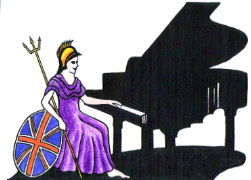Learn to Play the Piano Make Music
Piano and Keyboard Teacher in Canterbury, Kent CT2 by Michael Finucane

UK Piano Page


I have been a piano and keyboard teacher for twenty years, including a number of years as a partner of Intermezzo Music School in Canterbury.
I was born in Edinburgh where I was educated at Scotus Academy and then gained a degree form Edinburgh University. I started learning the piano under the expert guidance of my tutor when I was ten, passing through the grades to Grade 8 and have continued playing throughout most of my adult life. I moved to Kent in 1980.
I have dealt with all ages, abilities and levels which, of course, necessitates different approaches but the emphasis has always been on enjoyment and playing pieces right from the start. As students progress, they move on to acquiring the polished techniques that improve their performance and enhance their enjoyment.
Special courses are used for beginners and techniques are used to learn notation quickly and achieve a relaxed playing style. Pieces cover a wide repertoire - classical, jazz and popular - so the student is introduced to a variety of musical genres and with dedication and practice many students reach a high level of competence.
Qualification: Grade 8 piano
Qualification: Grade 8 piano
Hampstead, London
England
Experienced piano teacher and accompanist
Great Harwood, Lancashire
England
I teach piano & violin from my own home in Great
Music Festival for performers and guests Our 10th
18-06-2022 01:30PM
The Morecambe Bay Piano Group was set up to extend
11-12-2021 02:00PM
The Morecambe Bay Piano Group was set up to extend
08-01-2022 02:00PM
The Morecambe Bay Piano Group was set up to extend
12-02-2022 02:00PM
Tuning Temperaments
How many piano tuning temperaments are there?
There are countless variations, but most fall within three major categories;
1. Meantone, which generally concentrated the dissonance into a few unusable intervals (often called "wolf" intervals), so that the others could be Just. These are often called "restrictive" tunings, since there are certain intervals that are not usable. Good intervals are really good, bad ones are really bad. The Meantone era was approx. 1400-1700
2. Well-Temperament, which gives more consonance to the most often used keys, and more dissonance to the lesser used ones. Though not equal, these tunings are "non-restrictive" because all intervals can be used. The intervals range from Just to barely acceptable. Well-temperament refers to a genre, not a specific tuning. The Well-Tempered era is approx. 1700-1880.
3. Equal Temperament, which spreads the dissonance equally among all intervals.
There is no difference in consonance or dissonance between any keys, thus, there are no good ones or bad ones. Equal temperament represents a complete average. Dates of its acceptance are debated, but there is ample evidence that it was widely available by 1900 and is the predominate tuning on keyboards, today.
r.